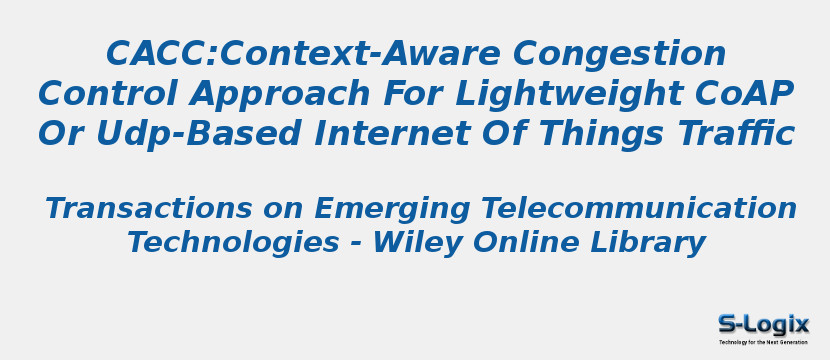Research Area: Internet of Things
With the emerging applications of the Internet of Things (IoT), a congestion control mechanism becomes a critical phenomenon for efficient communication in networks of constrained devices. The Internet Engineering Task Force developed the constrained application protocol (CoAP) as a standard communication protocol that favors lightweight interoperability for accommodating resource-constrained devices. However, the base CoAP specification congestion control is insensitive to various network conditions. Thus, differentiating the scenario of packet loss due to bit error rate and congestion, and identifying correct round trip time (RTT) of retransmitted message-acknowledgement is quite essential to adapt the CoAP behavior based on the network status. In this paper, we present a context-aware congestion control (CACC) approach for lightweight CoAP or user datagram protocol–based IoT traffic. The CACC proposes mechanisms that include retransmission timeout (RTO) estimator, retransmission count–based smoothed round-trip-time observation, lower bound RTO restriction approach, and aging concept. The proposed RTO estimators utilize the strong, weak, and failed RTT to identify exact network status and provide adaptive congestion control. The CACC incorporates the variable of retransmission count in request-response interaction model to mitigate the negative variation in RTT due to the fluctuation in the IoT environment. Moreover, with lower bound RTO restriction approach, the unnecessary spurious retransmissions are avoided, and the aging mechanism limits the validity of the RTO value to improve the efficiency of the proposed scheme. The proposed model is validated against baseline CoAP and CoCoA+ using Contiki OS and the Cooja simulator. The results are impressive under different network topologies.
Keywords:
Author(s) Name: Godfrey A. Akpakwu, Gerhard P. Hancke, Adnan M. Abu-Mahfouz
Journal name: EMERGING TELECOMMUNICATIONS TECHNOLOGIES
Conferrence name:
Publisher name: Wiley
DOI: 10.1002/ett.3822
Volume Information: Volume31, Issue2
